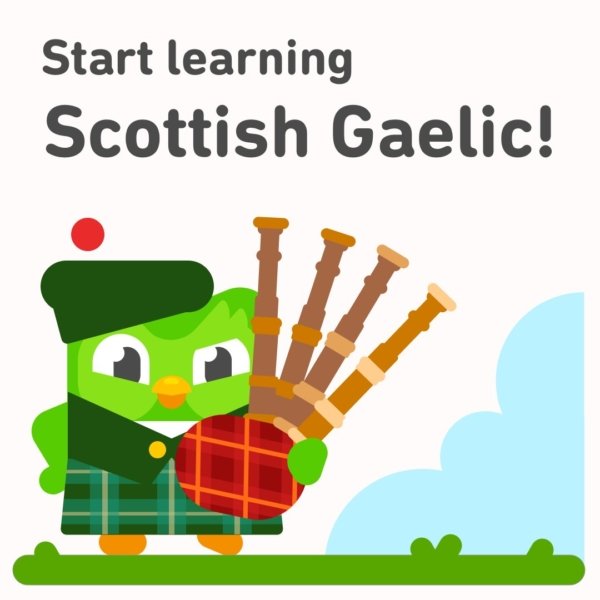The Importance of the Irish Language
It has and always will be with us…
For thousands of years the majority of the population of Ireland has had Gaeilge as their first language. Up until 250 years ago translators were required by British municipal authorities to issue edicts and decrees to the Irish population they sought to rule over.
Britain tried to eradicate Gaelic language and cultural practices through the Penal Laws, decimate the rebellious “surplus population” with the Great Famine, and other anglicization policies devised by Westminster.
Even the way the modern people of Ireland speak the English language reflects our intrinsic link to Gaeilge. It is a cornerstone of our culture and it even influences the way we think and perceive the world around us.
For example:
To say in English that “I am sad” indicates not only that you are feeling sad but confusingly seems to convey that sadness is a fundamental part of your being
Whereas as Gaeilge “Tá brón orm” confesses that for this period of time sadness is an external force upon you so you yourself are not the embodiment of sadness and sorrow.
You know more than you think…
It’s easy for us who have learned Irish in school for 12 years to believe that we know nothing of the language just because we can’t explain something complex like engineering through the medium of Gaeilge for example but this couldn’t be further from the truth.
All of us have “cúpla focal” when it comes to Irish. You could be “ag obair” then “ag glacadh sos” at or around “leathuair tar éis a deich” for some “ceapairí cáise” and a cup of “tae”.
And for people who didn’t learn Irish in school that’s “At work, taking a break at 10:30am for some cheese sandwiches and a cup of tea”.
Even the slang we grew up hearing in Hollywood movies sometimes has roots in the Irish language like “An dtuigeann tú?” you dig?
Interesting and complex characteristics…
The Irish language has Polychronic elements which bleeds into our cultural perception of time as opposed to English which is a Germanic language that shares a Monochronic structure which others in that language family. So when you tell an Irish person “meet me at the cafe at 3pm” they understand it as “meet me at the cafe in and around 3pm” and we’ll usually show up around 3:25pm or so.
We also curiously share words and phrases with those found in other languages. “Tá sé fuar” “ór” and “tarbh” sound like “Hace frío” “oro” and “toro” in Spanish (It is cold, gold and bull) along with “Abhainn” in Irish and “Afon” in Welsh (River) or “Scian” in Irish and “سكين/Sikiyn” in Arabic (Knife).
Together we can help to revive the Irish language…
In recent years interest in the Irish language has seen a resurgence with the new generation of Irish people across our island and even with many of our foreign friends from across the sea.
Irish language accounts are very numerous on TikTok and a community of passionate Gaeilgeoirí is growing day by day.
With musicians like Kneecap, showing us that Irish language music is not limited to old Sean-nós songs from small villages in the West of Ireland but that it is also a medium for telling the stories of working class communities from the streets of the city of Belfast…
…not that Sean-nós singing isn’t great in its own right. The way it brings a tense silence to a room by linking the audience with the hundreds of generations of Irish people who came before.
Spaces for the Irish language in modern Ireland…
It may not seem like it but there are spaces where you can meet with people and speak Irish.
Club Chonradh na Gaeilge, just off Stephens Green, in Dublin is one of these places and many more are popping up across the country. By using the Irish language everyday we can do our part to bring it back.
Government initiatives…
There are a few plans in place to expand the use of the Irish language across the entire island.
20-Year Strategy for the Irish Language 2010-2030: This comprehensive strategy aims to increase the number of people who speak and use Irish daily outside the education system and to improve the proficiency of those who use the language daily.
Gaeltacht Act 2012: This act focuses on supporting the Gaeltacht regions, areas where Irish is the community language, through the development of language plans tailored to each community's needs.
Údarás na Gaeltachta: This regional authority promotes economic and cultural development in Gaeltacht areas, including support for Irish language businesses and cultural events.
Funding for Irish Language Schools and Gaelscoileanna: The government provides support for schools that teach through the Irish language, both within and outside the Gaeltacht areas.
TG4 and Raidió na Gaeltachta: State-funded media that broadcast in Irish, providing a platform for Irish language content and supporting the language's visibility.
Strategic Framework for the Irish Language 2015-2035: Though not fully implemented, this strategy aimed to enhance the status and visibility of the Irish language in Northern Ireland through education, culture, and public services.
Irish Language Broadcast Fund: This fund supports the production of Irish language content, helping to ensure that Irish speakers in Northern Ireland have access to programming in their language.
Foras na Gaeilge: An all-island body responsible for the promotion of the Irish language throughout the island of Ireland, including Northern Ireland. It supports various language initiatives, education programs, and cultural events.
Irish Medium Education: Support for schools and pre-schools that teach through the medium of Irish, including funding and development resources.
It may not be perfect but these plans and initiatives do give us hope that our efforts to revive the Irish language are not just supported by the people but also have the support of governments across our island…
…and remember “Broken Irish is better than clever English!”
Learning Irish
A message from Colún Games CEO Darragh Gill…
“If you’re refreshing your memory or learning Irish for the first time it’s best to learn the dialect from where your people are from. My Father’s side of the family is from Donegal so I am studying Ulster Irish.
If you’re not from Ireland but you want to learn anyway then you can learn the dialect of whatever province you want to live in however there are no strict rules to what dialect you can speak so have fun with it!”
There are many video series available on YouTube to help you…
Now You’re Talking is a great series that focuses on the Ulster dialect but there are also many more videos available for if you want to learn Munster or Connaught Irish.
Sadly there is no Leinster dialect of Irish anymore due to very heavy colonisation by England during the Tudor Conquest of Ireland in the 16th century where almost 33% of the population was killed.
Also an interesting way to teach the language to people of all ages…
There are also courses in both Irish and Scots Gaelic you can do on Duolingo…










